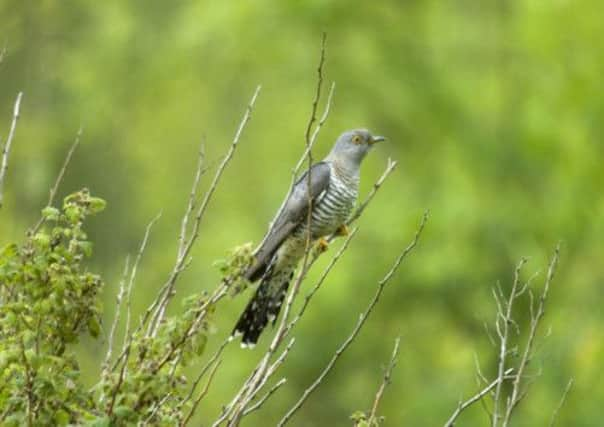Highland cuckoos get GPS tags to track migration


The cuckoos were caught and fitted with solar-powered tags by researchers at sites in Lochalsh and Skye.
Staff with the British Trust for Ornithology (BTO) attached transmitter packs to two cuckoos caught on the National Trust for Scotland’s Kintail Estate, and also to single birds caught at the Trust’s nearby Balmacara Estate and Forestry Commission Scotland’s Kinloch property on Skye.
Advertisement
Hide AdAdvertisement
Hide AdJohn Calladine of the BTO said: “Cuckoos are one of a number of bird species that used to be common and widespread across Britain but which have declined markedly, especially in the south and east.
“Being able to follow their individual movements to the Congo basin and back is inherently fascinating.
“An important part of this work will be in identifying areas and habitats used by the birds throughout the year, even across years. It will help towards identifying reasons as to why the north and west has become a refuge for these and other species and suggest ways to ensure that remains the case.”
The Trust birds have been christened Livingstone, Karma and the catchy 128303 – the official name is pending.
This is the third year of the BTO’s groundbreaking project to better understand the migration routes and African wintering grounds cuckoos use, with state-of-the-art light weight technology now making this possible in a way that eliminates impediment to the birds.
The cuckoo, which produces one of the most familiar soundtracks to early summer in Britain, has undergone a steady long term decline in southern England.
Further north in Scotland, however, numbers appear to have remained fairly stable and even increased.
Five Cuckoos were fitted with transmitters in the Trossachs in 2012, two of which survived return journeys to Africa’s Congo basin.
Advertisement
Hide AdAdvertisement
Hide AdThe Lochalsh and Skye birds are now the most northerly in Britain to be tracked to date.
Mr Calladine and colleagues Chris Hewson and Phil Atkinson, who caught the birds and attached the transmitters, were pleasantly surprised at the numbers of cuckoos attracted down to their decoy bird and recorder calls.
The two caught at Kintail were done so within only an hour of their start at dawn, which they considered to be amongst their quickest since starting the project in 2011.
Rule Anderson, a ranger with the National Trust for Scotland at Kintail added: “People living locally will not dispute that numbers appear particularly healthy this year, with the cuckoo’s distinctive call as noticeable as ever.”
The movements of the Lochalsh and Skye birds, along with those from other parts of Britain can be followed at www.bto.org/cuckoos